Unidentified Flying Objectives (UFOs)
I was recently engaged on an initiative which was motivated by a moderately articulated business need. The opportunity promised enormous improvements to the company’s enterprise capability. However, after the initiative kicked off we were propelled into an unnecessary journey of continuous improvement towards an ambiguous and evolving concept. This initiative was weighed down by unidentified flying objectives (UFOs).
UFOs refer to strategic irregularities in the business-sphere, which hover, appear, or dissolve when scrutinised. They generally tend to appear after the launching of unplanned strategic initiatives. UFOs are not easily identifiable or definable, unless the use of instrumentation such as scope scanners or feasibility radars are applied by classified authorities called Business Analysts.
UFOs display the following characteristics: they are shallow (insufficient), disc-shaped or round (recurring), and are capable of displaying luminosity (radiance). They shape-shift or evolve moving at high speeds, often counter to the strategic initiative underway.
In some instances, trying to decipher where UFOs originate from can place the Business Analyst at the risk of painstakingly attending to ongoing marginalised and unresolved issues.
Quite the opposite, SMART objectives are specific, time-related and measurable targets that a person (or system) aims to achieve. These are basic tools that underlie all planning and strategic activities, and serve as the basis for evaluating business performance.
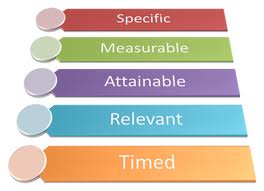 Why is it we often don’t get objectives right? Leaders conduct their general business, approving and kicking off initiatives with good intentions to make people, systems, structure and processes better. However, when it comes down to the setting of objectives we are often crippled during the latter stages by misalignment between objectives, deliverables and performance. The setting of objectives is also impeded by limited organisational readiness, change management, scope, economic drivers, time, and resources. Correspondingly, success tends to be emphasised by the “delivery on time and within budget” mantra.
Why is it we often don’t get objectives right? Leaders conduct their general business, approving and kicking off initiatives with good intentions to make people, systems, structure and processes better. However, when it comes down to the setting of objectives we are often crippled during the latter stages by misalignment between objectives, deliverables and performance. The setting of objectives is also impeded by limited organisational readiness, change management, scope, economic drivers, time, and resources. Correspondingly, success tends to be emphasised by the “delivery on time and within budget” mantra.
The strategy, objectives and measurement approach is vital for business analysis and delivery success. It is imperative to justify Why we are doing it, closely reinforced with the What, Where, Who, How and When (5W’s & H).
I have persevered by taking business leaders on a very simple journey to optimise their business initiative objectives and assure success using the following 5 steps:
- Clarify what is driving the initiative. Is it a Problem, Opportunity or Need?
- Translate the Problem, Opportunity or Need into Goals
- Evaluate each Goal against SMART objectives and the 5W’s & H principles
- Transform each Goal into a SMART objective
- Identify how your SMART objective can be evaluated and re-evaluated to become SMARTER
 The benefit of using this approach for business leaders is self-assurance in setting a clear vision with reliable measures for performance; and traceability from strategy through to delivery. A good alignment between SMART objectives, solutions and benefits will empower business leaders to make informed decisions and measure performance with confidence.
The benefit of using this approach for business leaders is self-assurance in setting a clear vision with reliable measures for performance; and traceability from strategy through to delivery. A good alignment between SMART objectives, solutions and benefits will empower business leaders to make informed decisions and measure performance with confidence.
The Business Analyst is instrumental in aligning objectives to requirements and solutions for traceability management. For the Business Analyst, developing clarity of the objective(s) enables and adds value to business analysis delivery.
So travel forth at the speed of light and unlock those UFOs if you sense or observe them in your business activities. Leave behind a legacy and impart the above simple approach for business leaders to define, translate and transform UFOs into SMART objectives.
Which intuitive instruments do you use to sense, observe and investigate UFOs in your close encounters with the third kind?
How do you manage those UFOs into SMART objectives?
Don’t forget to leave your comments below.
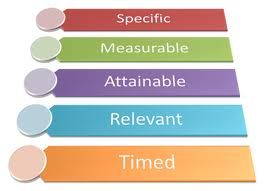

 A year ago I wrote the blog
A year ago I wrote the blog 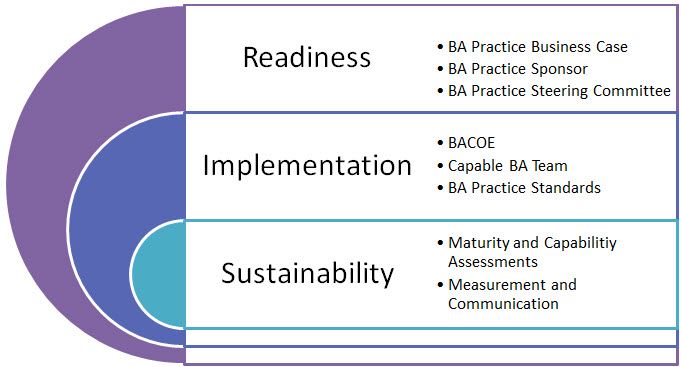
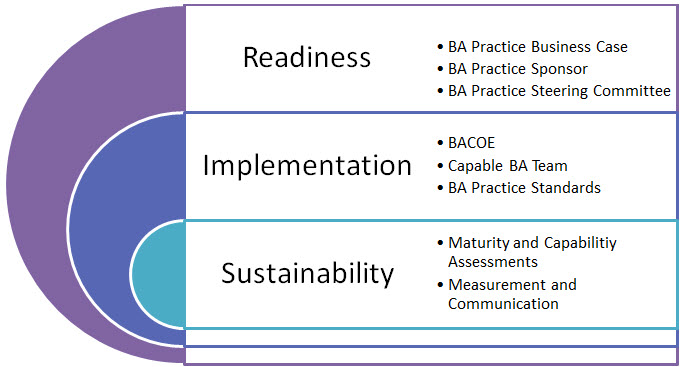
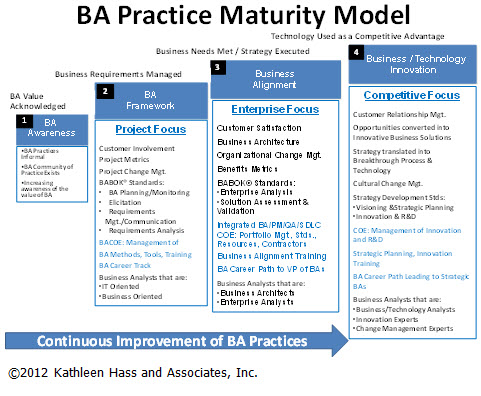 The BA practices required for each level are described below. Feel free to use this matrix as a checklist to help your BA team conduct their assessment.
The BA practices required for each level are described below. Feel free to use this matrix as a checklist to help your BA team conduct their assessment.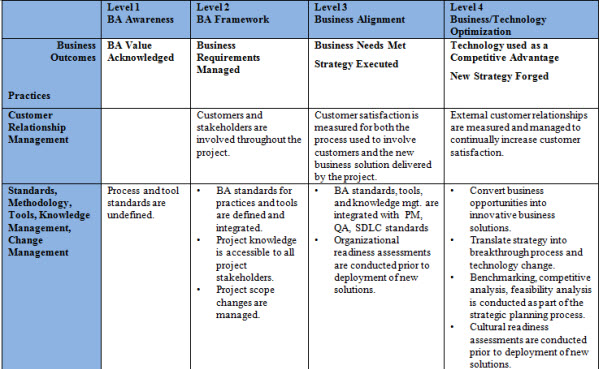
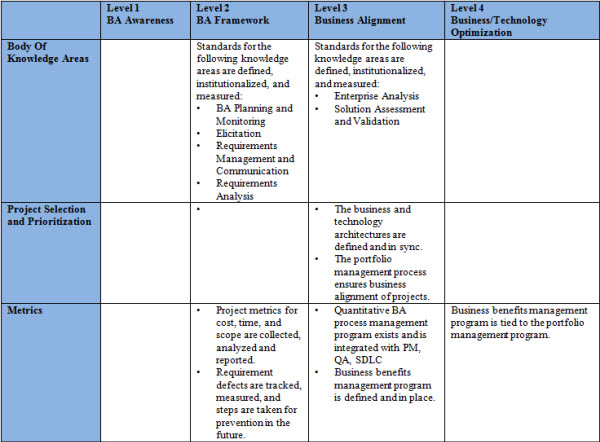
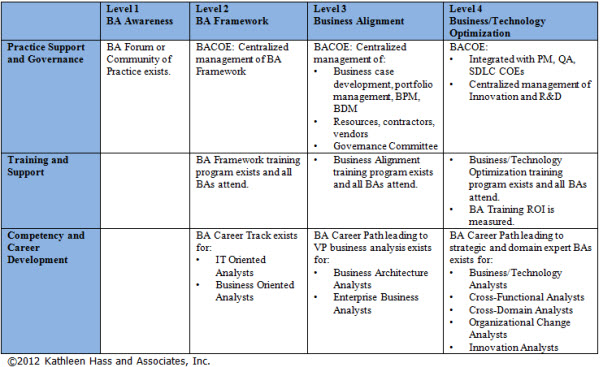

 BAs need information. The best BAs get information by building and maintaining strong relationships with all project team members. From the CIO to the front-line employees, BAs rely on many “friends”. BAs need to anticipate their friends’ needs and learn how to influence cooperation.
BAs need information. The best BAs get information by building and maintaining strong relationships with all project team members. From the CIO to the front-line employees, BAs rely on many “friends”. BAs need to anticipate their friends’ needs and learn how to influence cooperation.